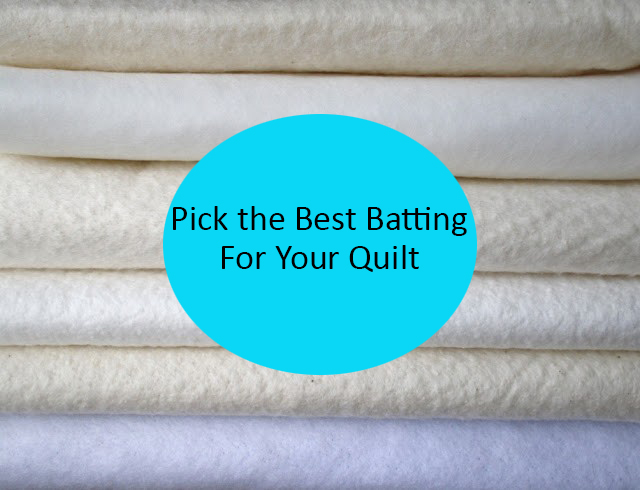One of the questions I get a lot of from new quilters is what type of batting they should use so I thought I would address that question here.
What Kind of Batting Should I Choose? (Batting Basics)
There are a lot of different types out there and I could probably write a whole book on the subject. Not sure it would be the most interesting book mind you but still…
Each step of bringing a quilt to completion has its own choices, challenges, and delights. Some people love piecing the quilt top but could easily forgo the sandwiching and quilting part of the process. I guess that’s why I know lots of people with a cupboard full of unquilted tops.
Batting selection can be boggling these days as there are so many choices on the market. So how do you choose the right batting for your project?
Questions to Ask Yourself
First off you need to start by asking yourself some basic questions.
What is the quilt’s purpose?
Is this quilt a
- baby quilt that will be washed often
- lap quilt that will be used and needs to be cuddly
- bed quilt that will be used however may not be washed as often
- keepsake quilt that will be admired but not used as much
- show quilt that will be hanging on display
How will I be finishing it?
- Will it be tied
- Hand-quilted
- Machine quilted on a domestic sewing machine
- Machine quilted on a longarm machine
If Machine Quilted What Kind of Quilting?
This question does go back to the first question a bit, what is the quilt’s purpose as depending on the purpose of the quilt, will also depend on the type of quilting that will be used on the quilt.
Will the quilt have
- A loose all-over quilting design
- An all-over quilting pattern such as a pantograph which is a little more densely quilted than the above
- Moderate custom quilting along with some SID (stitch in the ditch quilting)
- Heavily custom quilted like you would find in pieces that would be on display
Basic Batting Terms
Once you have answered the questions above it is time to move onto what types of batting are available. Here are some simple terms to help you get started.
Loft: High
Loft is the thickness of the fluffed batting. A high loft is anything above 1/2 inch, and the highest lofts come in the polyester battings. These types of battings are typically used for hand tying quilts, and the end result is a very fluffy quilt.
Loft: Medium
The fluffed batting is somewhere between 1/4 to 1/2 inches deep
Loft: Low
The fluffed batting is somewhere between 1/4 – 1/2 inches. This is the most common loft for machine or hand quilting.
Quilting Distance
Quilting Distance is the distance between rows of quilting stitches which will keep this batting from shifting or bunching. The package will have this information on it or if you are buying from a roll at the quilt store ask the person helping you what the quilting distance for that particular batting would be.
If you want really simple loose quilting and you buy the wrong batting, when you go to wash the quilt you could end up with lumps and bumps where you don’t want them to be.
Most battings can handle moderate quilting without any issues.
Bonded
Fibers are held together through a bonding agent, similar to a glue. Some bonded battings may not be able to be preshrunk as the glue used may dissolve. Another drawback to this type of batting is that the quilting stitches may need to be really close together so the bonding doesn’t come apart when the quilt is washed.
Scrim
A light, loosely woven fabric, sometimes used to stabilize batting fibers when needle-punching. Often a polyester fiber, it may even be used in batts labeled as all cotton.
Needle-punched
Fibers are loosely felted together by a felting process using tiny needles. This creates a more stable batt, but some hand quilters find it difficult to use as it is quite firm. Most needle-punched batts include a scrim for securing the fibers. They may provide more stability for wall hangings.
Different Batting Fibers
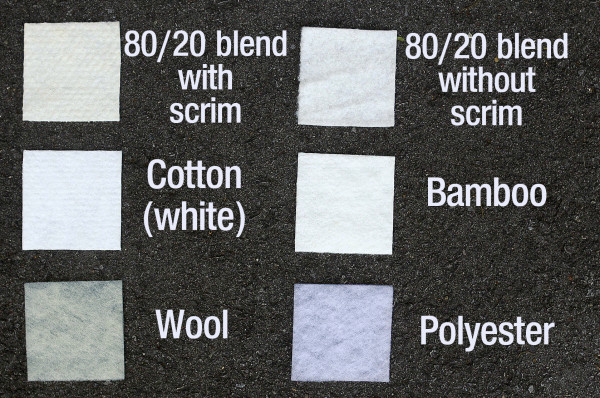
So now you have decided what the quilt is to be used for, whether you are going to tie, hand quilt or machine quilt the finished top and you have some idea of batting terminology, now it’s time to pick what type of fiber you want your batting to have.
Cotton
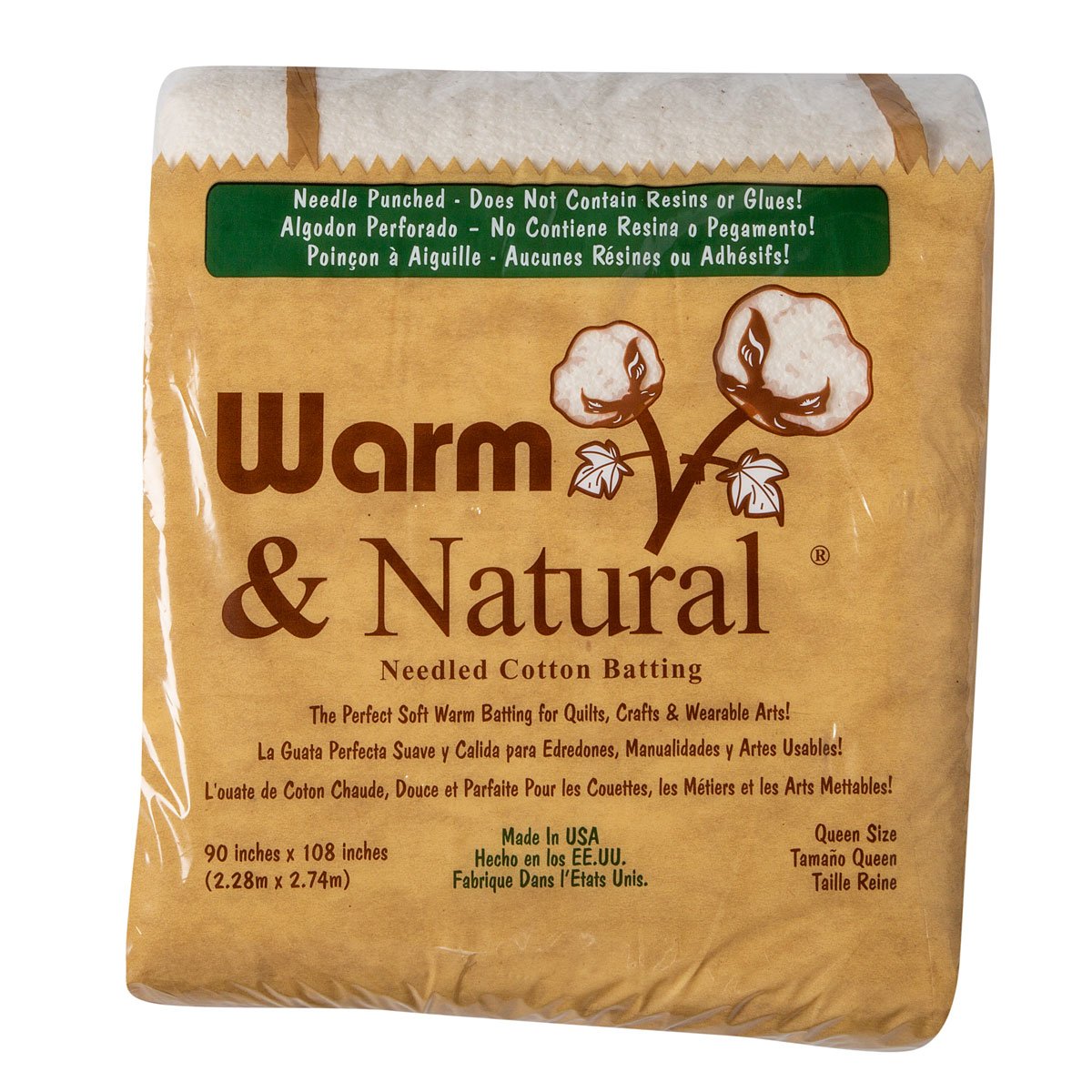
Fiber from harvested cotton bolls. Cotton is stable, soft, and washable however it will shrink. Cotton tends to yield a flatter look than a polyester or cotton/poly blend when quilted.
The cons of straight cotton batts are that the batting can ‘beard’ or have fibers migrate through the stitching holes of the quilting. This may not be too big of a problem if the fabrics used in the quilt top or mostly lighter in colour so the bearding won’t be that noticeable, however, if the fabrics used a darker and you have a white or cream-colored batting, that bearding will really show.
You may want closer quilting when using cotton batting as the fibers can shift and create lumps if not quilted densely enough.
If you really like the look of antique quilts when they are washed, then you will like the look of the washed quilt using cotton batting.
Polyester
Polyester batts have a higher loft than cotton and offer great stability between fibers. Polyester batts are the best choice when you want to ‘tie’ a quilt as it will have the least bunching. These types of battings are also sometimes used in baby quilts that you want to be puffer.
Just a word of warning though these battings can be harder to machine or hand quilt through given the loft can be higher.
The one disadvantage of polyester batting is breathability therefore if the quilt is to be used as a bed quilt this may not be your best option.
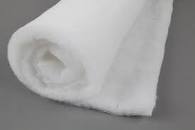
Cotton/Poly Blend
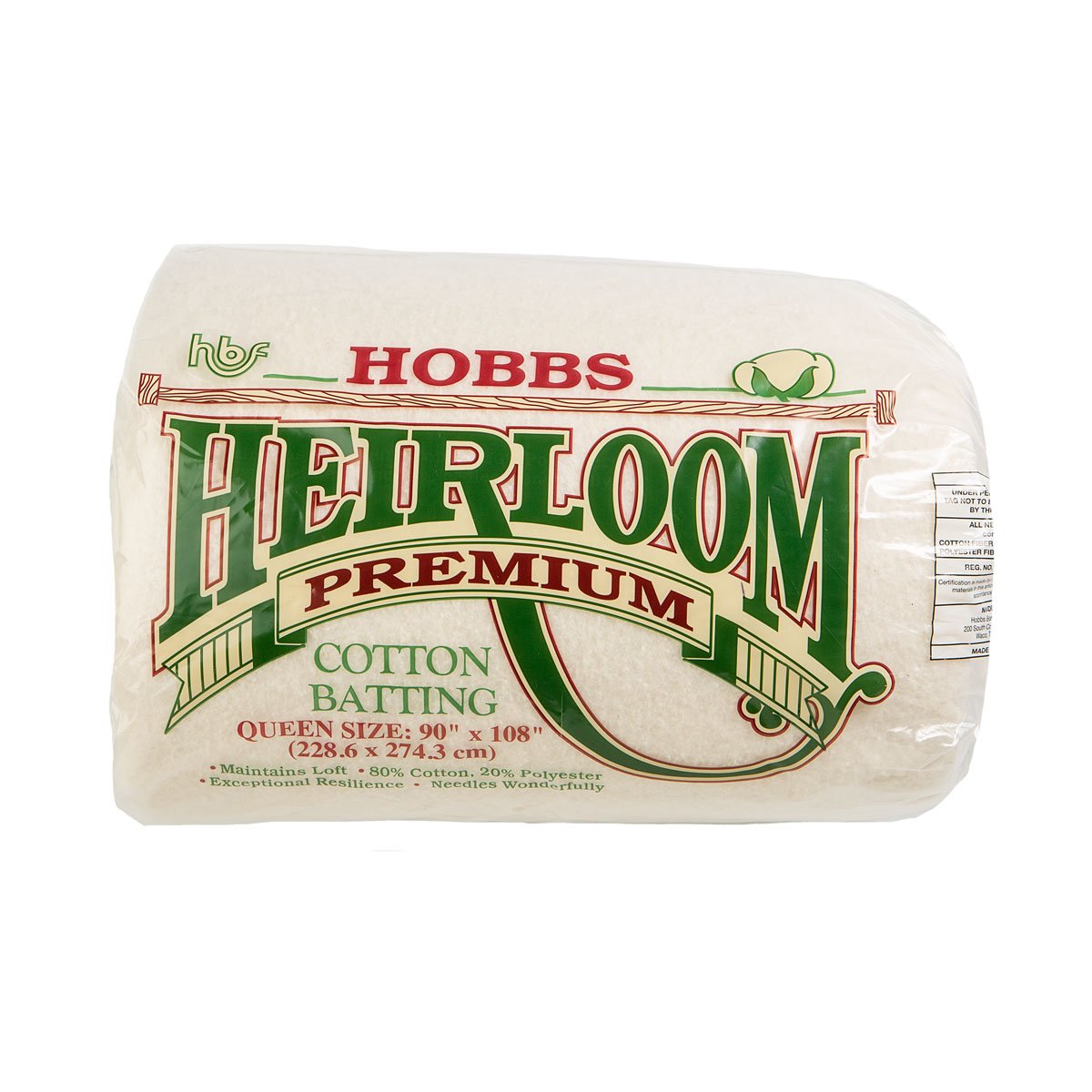
Considered by many to be the best of both worlds, these blends offer the softness of cotton and the stability of polyester. Bonded ones may be easier to hand quilt than needle-punched. Blend percentages vary by product however the most common blend is 80% cotton and 20% polyester.
This is a very good choice for both hand and machine quilting. You can also have a looser quilting design using this type of batting without it bunching during washing.
The one disadvantage for this type of batting is it can beard and it does tend to tear easily so should be handled carefully.
Bamboo
The fibers from bamboo are long and strong, but surprisingly soft. Bamboo can be as drapeable as silk, and as soft as fine wool.
This is a wonderful batting to work with. It is good for both hand and machine quilting, it nice and warm to sleep under.
The one con with bamboo is that it can be more expensive than some of the other choices.
Wool
Wool is extremely soft, and the warmest batting option. It is easy to hand quilt and is a good choice for machine quilting as well.
Wool seems to be the preferred choice of batting for show quilters. When quilters are quilting for shows they quite often use two battings, one 80/20 and one wool batting.
Recycled Plastic
Yes, there is know even an option for batting made from recycled plastic bottles! If you are a person who is very eco friendly this may be a good option for you.
Fusible
Contains a fusible web so you can baste layers together. When using fusible batting layer quilt backing, batting, and quilt top together. Use the wool setting on your iron, press from the center out pressing each area 3-4 seconds. Once finished, allow the quilt to cool, and repeat on the other side.
Note: Not good to use if you are taking your quilt to be quilted by someone with a longarm.
Batting Colour
Once you have finally decided on what type of batting you are going to use there is one final consideration to make and that is the batting colour.
Not all types of battings have choices so depending on the batting you really want to use, you may not have a choice of colour.
Cream or Off White
This is the most popular colour of batting. Both Hobbs 80/20 and Warm and Natural two very popular types of batting are cream or off-white in colour.
Black
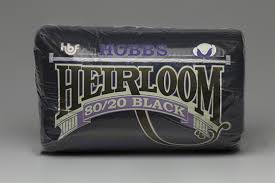
Hobbs 80/20 batting also comes in black. You may wonder why anyone would use a black batting, however, consider this, if your quilt project is mostly black and bright colours you don’t want a white or cream batting showing through the needle holes. In that case, you may prefer to use a black batting.
Black batting is a little stiffer than the cream because of the black dye however it does soften up with use.
White
Most 100%cotton batting is white and there is a batting called Warm and White that is also very white. You would want to use a white batting if your quilt is more modern with a solid white background colour. The cream batting would dull the bright white look of the quilt.
What Kind of Batting is Right for You?
Well depending on the project sometimes it may be whatever you happen to have lying around as long as it’s not the really puffy polyester type (unless you are hand tying the quilt that is).
If the quilt is for a very special purpose then you will defiantly want to put a little more thought into your batting choice.
The Types of Batting I like to Use
As a longarm quilter that doesn’t supply batting, I have quilted on many different types of batting. Some are nicer to work on than others.
My favourites to quilt on so
- Hobbs 80/20
- Warm and Natural
- Warm and White
- Hobbs 80/20 Black
- Bamboo (my all-time fav) although it is more expensive
I have only ever used Wool batting once however I discovered I am allergic to it so it is not something I would ever use again.
What is your favourite batting?
Don’t forget to sign up for the newsletter!

